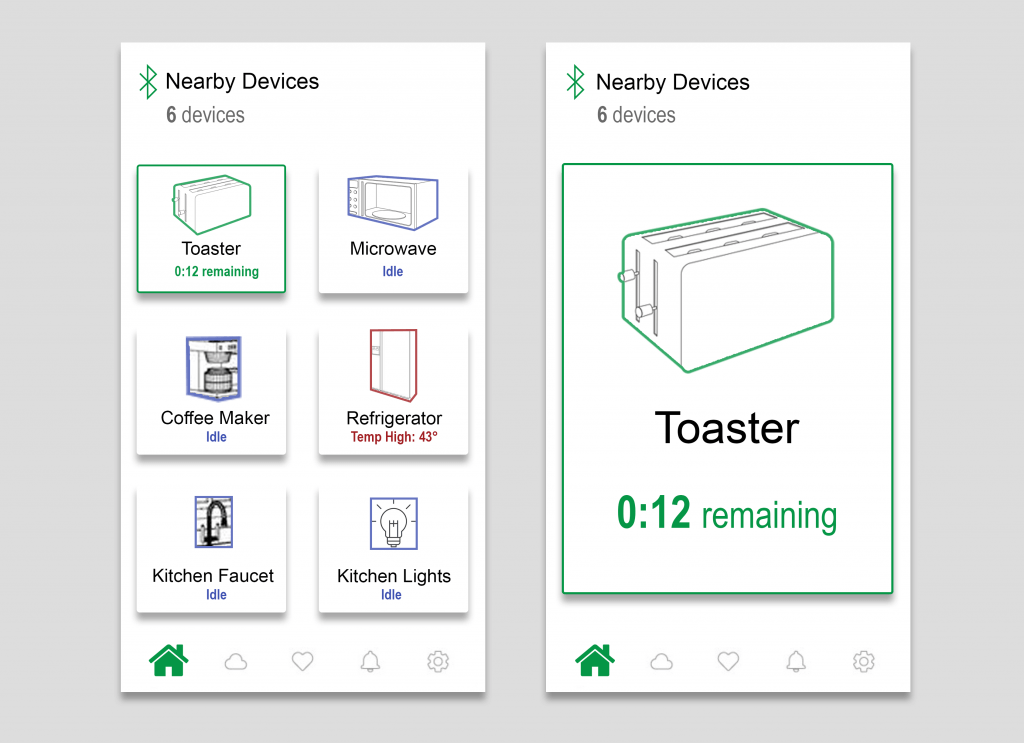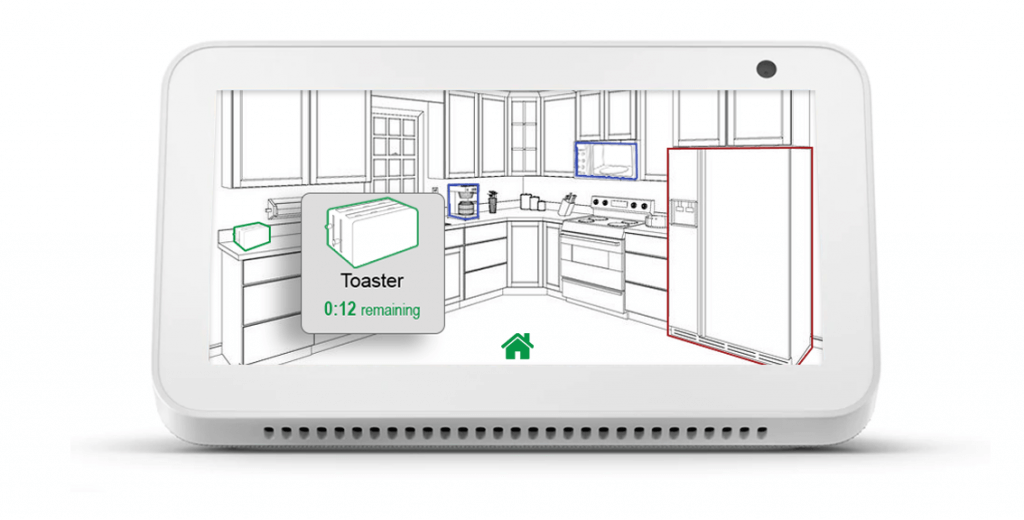I’ve been hearing the phrase “disposable Bluetooth” a lot this year, and to be honest, wireless connectivity cheap enough to use in disposable products would open up a lot of applications for our customers. So what is disposable Bluetooth? Is it something less than regular Bluetooth? Is it less robust or does it have a shortened deployment life? What makes it disposable?
Contents
“Disposable” Bluetooth
Turns out “disposable” Bluetooth is plain old Bluetooth Low Energy (BLE), except cheap enough to be used in disposable products. Part of what drove the development to hit the disposable price point was the promise of high-volume medical applications like tracking the use of medications. For example, if opioid pill blister packs (that were so overprescribed in the last decade) were equipped with disposable Bluetooth that could record and report when each pill was popped out of the pack, it would have been obvious to all that the pills were being resold to addicts and not being used by the prescribed patient. Basically, a patient doesn’t pop 30 pills in five minutes, that is what a reseller (i.e., a dealer) or drug abuser does. But then again, it was probably obvious from the sheer number of prescriptions that these were being resold to addicts.
So what is the price point for “disposable” Bluetooth? In high volumes (5 million pieces), the price is 50 cents. I have to admit, that is really cheap and opens up a lot of options for products where the value of Bluetooth previously didn’t warrant the price. The other key feature necessary to enable disposable applications — and one that goes hand in hand in this race to the bottom of Bluetooth pricing — is really low power. The two vendors I’ve talked with about their disposable Bluetooth solutions are Silicon Labs and Dialog Semiconductor. Both have driven out cost and power to make their devices attractive for disposable applications.
What’s Next? Altering the User Experience
Now that disposable BLE is here, I’m expecting to see a lot more Bluetooth devices in my life, and I believe a large increase in the number of Bluetooth devices is going to necessitate changes in the Bluetooth user experience. Consider, for instance, that I currently have 20 Bluetooth devices paired to my phone. I’d estimate that two to three times per week I need to find one of these 20 devices on my Bluetooth connection page in my phone’s settings. Like when the car connects to my wife’s phone, and I need to force the connection to my phone or when my headphones are connected to the TV, and I want them connected to the phone. Generally, this requires me to open my Bluetooth connections on the phone, find the right device and force it to connect or disconnect. Twenty is already a bit too long for this list because recognizing the 20 near randomly named devices requires a little more focus than I want to apply as I’m shooting out of my driveway while the cross-traffic sensor is blaring its alarm. When I go from 20 to 200 devices, this isn’t even a possibility.
This leads to my question, “Should we be designing disposable products differently?” I believe the answer is “yes,” and that the lower price point will require us to develop new ways of interacting and managing Bluetooth devices. Let’s look at the various Bluetooth use cases and see where we need to make changes:
Use Case #1: For higher-priced, durable goods, such as my car or my Bose headphones, I think the current management approach is fine. Let’s say I have 20 of these now.
Use Case #2: For one-and-done applications, such as using Bluetooth to fix the poor onboarding experience of Wi-Fi devices or handling the one-time setup of a new router, then we likely just need to add a way to say “don’t remember this device.” Or maybe devices that haven’t been accessed in the last 30 days are set to expire. While we may eventually need to reuse the onboarding experience, it won’t be frequent enough that it should permanently clutter our Bluetooth device list. As such, we would simply need to pair the device again when it’s needed.
Let’s be generous and say I’d have 20 devices in the house for which Bluetooth is used for onboarding and configuration. So what are my 160 new Bluetooth devices going to be anyway? I’m not quite sure, but I can envision at least two new categories.
Truly “Disposable” Vs. Bluetooth-in-Everything
First are truly disposable devices. Say I got a set of headphones on the plane because I forgot mine. I might use them for a week, then I’ll toss them. This type of disposable device could be handled by simply having the connection expire. My pill pack example could be another instance of “disposable” Bluetooth. It records when I take the medication and reminds me when I skip doing so. It might report to the doctor/pharmacy as well. When I’m done with the pack, I just toss it. This type of device is a different beast from the headphone example because this isn’t using the Bluetooth profile already built into my phone. I need a custom app running in the background or I need it to connect to something other than my phone. Let’s circle back to this option in a minute.
The second kind of new device I can imagine is the Bluetooth-in-everything approach. Fifty cents is a lot cheaper than Wi-Fi, and the power budget for disposable Bluetooth is far better than Wi-Fi. Additionally, Bluetooth pairing is superior too, so making Bluetooth the standard for connected devices makes some sense. Every appliance might have disposable Bluetooth, including the toaster, space heater, washer/dryer, food scale, refrigerator, stove, door locks, faucet, lights, even bicycle tires and more.
Until now, we have basically had two classes of Bluetooth devices. One class is so popular that its basic operation was standardized and integrated into the phone’s operating system (i.e., the hands-free headsets). You aren’t required to download an app to use your headphones. The second class is Bluetooth devices with a perceived value that warrants downloading a special app to communicate with the device. Take a space heater as an example. It is not popular enough that it would be designed into the phone’s OS therefore demanding a unique app to use.
What happens when we have Bluetooth in everything? We can’t be expected to have unique apps for each device. Imagine when everything has Bluetooth because every manufacturer wants to check all the boxes so they don’t lose sales. Maybe they don’t see Bluetooth as a compelling feature for their product, but their competitor has it, so they include it.
Let’s think about the toaster for a second. I can imagine someone has designed or is designing a connected toaster that provides a countdown to when my toast is going to be done and probably records toasting preferences by family members. From an engineering point-of-view, disposable Bluetooth could eliminate (or reduce) the need for knobs and buttons on the toaster and thereby lower the device’s bill of materials. On the flip side, what a horrible user experience. Everyone that uses the toaster needs to download the app and every time they want to toast something, they have to unlock their phone. This clearly isn’t going to work.
Two Solutions
I can imagine two different potential solutions.
Solution #1 is to use the advertising capability of Bluetooth to share information without pairing. Perhaps all my Bluetooth devices are chirping their data out constantly. This presents some UI design changes, but maybe somebody comes out with a single app that listens to all your devices and helps you interact with them. Maybe we use device proximity and angle-of-arrival information to present devices spatially to the user.

Sample app screens show nearby Bluetooth devices with their current status.
The second solution I alluded to earlier is connecting these devices to something other than my phone. The problem with connecting to my smartphone is the fact that it is my phone and not readily accessible by my family or guests. Suppose these devices were instead connected to our personal assistants. Suddenly, everyone can interact with the devices, data can be stored to show trends, warnings could be announced when needed and you effectively have a unifying app. This is starting to sound a lot like Zigbee, except with more location awareness.

Sample app displays nearby Bluetooth devices and current status on an Amazon Echo Show, Google Nest Hub or comparable smart device.
I do not know how we will solve the user experience issues as disposable Bluetooth increases our device count by 10- or 100-fold. When you think about it, it is exactly the same problem that has been vexing the connected home. Stuff that requires a special app and doesn’t just work with the rest of the system is not terribly helpful. Personal assistants, such as Amazon Echo and Google Home, have done a lot to give the appearance of integration. I can control all my lights — no matter what brand — through Alexa. Of course, it requires a fair amount of effort, some careful naming and having a list posted to train the family. I think Bluetooth has some unique advantages that would allow spatial awareness with the angle-of-arrival feature that other protocols don’t. It will be interesting to watch how things develop going forward.
